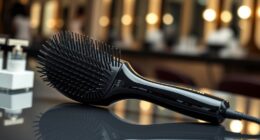How to Stop Pegs from Slipping
This can be a frustrating experience as you’re trying so hard already to play in tune, and then the peg slips and your string is useless until you bring it back up – if it stays.
Well, there are two main reasons the peg will slip, and both come from the fact that the pegs are not attached, they are fitted. This means that if either the fit of the peg or peg hole is off, it won’t fit (DON’T BUY POORLY MADE CELLOS!!!).
The other thing that can happen is more benign and is merely weather changing either the humidity content or the actual size of the wooden peg.
The first trick I show in this video is to make sure you have good peg turning technique.
This is as simple as pushing in as you turn, thinking about it as though it’s a screw that needs to be turned in, but that you have to push in order to get it to screw.
This will make sure it’s in as far as it will go and that friction is working for you keeping the peg in place.
If you are sure you are turning as well as you can, or still have a tricky peg or two, then there’s a product you can try called peg dope. It can be purchased cheaply on Amazon or your local luthier will have some and I’m sure will be happy to help.
If neither of these options are working you will need some combination of a new peg or new peg holes drilled, which are listed in order of increasing cost.
This is the reason I say don’t buy cheap cellos, as you will easily triple or more your initial cost as you try to fix up a cheap cello to par. It’s not about class – it’s about things like pegs slipping or bridges warping; things that make the cello un-playable at all.
I once had a cello that needed new pegs, and the holes were too big instead of too small, and had to be filled first before being re-drilled. So it can get complicated!
When you’re trying to stop your pegs from slipping, it’s a good idea too to keep your instrument humidity controlled.
Whether this means keeping it in a consistent environment, or choosing to use a product called a damp-it that can add moisture during winter months, ignoring humidity care is one way to ruin your instrument generally, but will affect pegs slipping.
Many people find their pegs slip a lot in dry and cold environments, when the climate keeps the peg smaller in the hole and it has a harder time gripping.
General instrument care aside, one product many cellists like nowadays (including myself) is a peg whose handle detaches as a key, so that the pegs for the low strings don’t hit your neck as you’re playing.
This may be for more intermediate/advanced students, but it’s worth considering if you are having trouble getting your posture right.
If your pegs stay still in one location, but you’re not in tune, first detune the fine tuners as far as they will go. This way, you can tighten to almost as high as the note with the peg, and then finish tuning with the fine tuner.
I have to do this on my G string, because that peg struggles to stay turned properly.










